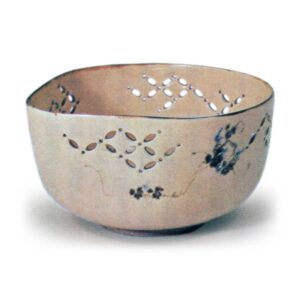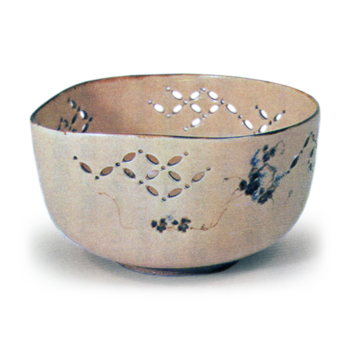
Awataguchi pottery from Awataguchi, Kyoto. In the Genna (1615-24) or early Kan’ei (1624-44) period, a Seto potter named Sanjiya Kuemon came to Kyoto and built a kiln on Awataguchi Sanjo Street in Keage (Higashiyama Ward), where he produced pottery with his children Shoemon and Sukeemon and his apprentice Tokuemon. According to records, however, the kiln probably did not open until the Keicho period (1596-1615). It seems to have mainly produced tea utensils such as tea containers and tea bowls, especially copies of Chinese tea containers, Kureki and Iraho ware, and other types of tea utensils. In addition, many mukozuke (tea bowls) are rust painted, or rust painted and underglaze blue, and have a light and elegant appearance. There are also Shigaraki-style Shigaraki-te wares that at first glance appear to be Niinsei-style, and are commonly referred to as Awataguchi Niinsei. Awataguchi ware in the narrow sense seems to have continued until around the Genroku period (1688-1704). There are two types of “Awataguchi” mark.



